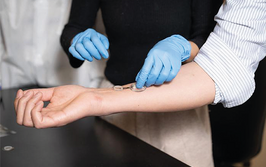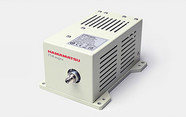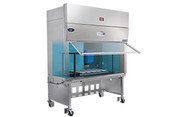Building a Custom Biosafety Cabinet Around Your Laboratory Automation Equipment

contributed by NuAire |
What happens when your risk assessment identifies that the large equipment (3D bioprinters, cell sorters, automated liquid handlers, etc.) you plan to use requires a primary containment device, such as a biosafety cabinet (BSC)? Will it safely fit inside a standard 6 ft. (1.8 m) BSC while still providing adequate containment? In some cases, a custom BSC designed specifically to fit around your equipment and your laboratory processes may be necessary to provide sufficient personnel, product, and environmental protection. In this article, we will discuss:
- How to determine if your equipment needs to be placed inside a custom biosafety cabinet
- What equipment features and user requirements are important discussion points for custom BSC design
- Where to physically install a custom BSC in your lab space
- Considerations for performance testing and field certification to ensure proper BSC airflow, operations, and containment with the equipment inside
Custom Biosafety Cabinet Risk Assessment
When conducting a risk assessment for laboratory work involving biological materials, one important aspect is to review the procedural risk factors and laboratory processes that are going to be performed with the hazardous agent(s).1-4 This should include a review of specific laboratory equipment where biohazardous materials will be handled or processed. Additionally, the use of chemicals or radiological materials simultaneously along with the biological agents or in the same piece of equipment should be considered as part of a complete risk assessment. For more detailed information about conducting thorough risk assessments, especially those involving risk mitigation using BSCs, consider reviewing references 1-4.
Log in or register to read this article in full and gain access to The Analytical Scientist’s entire content archive. It’s FREE!

















